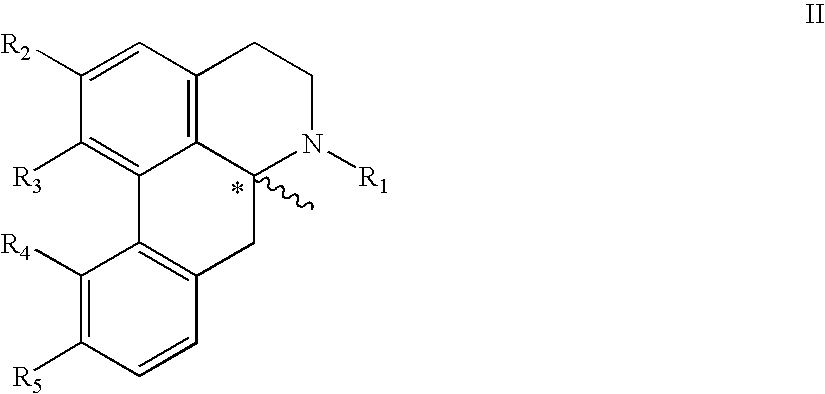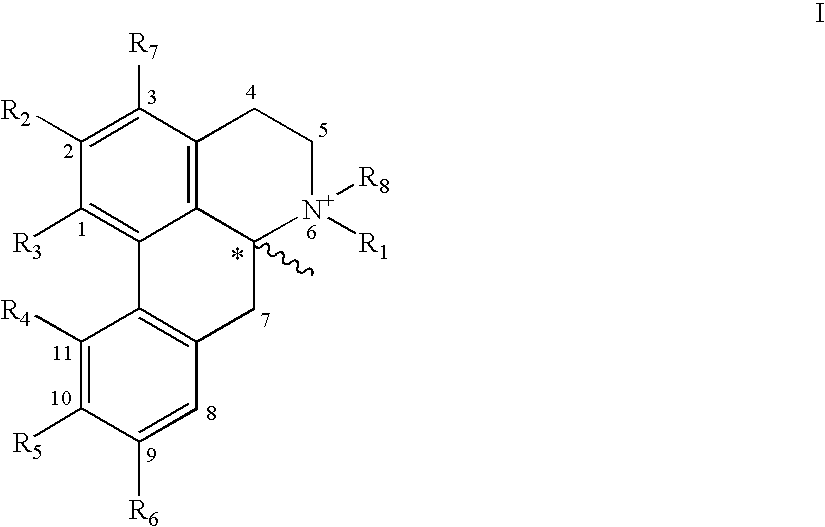Apomorphine inhibitors of amyloid-beta (Abeta) fibril formation and their use in amyloidosis based disease
a technology of amyloid-beta and fibril formation, which is applied in the direction of biocide, heterocyclic compound active ingredients, drug compositions, etc., can solve the problems of affecting the aggregation of amyloid-beta, preventing the structure-based design of specific a.beta. anti-aggregation agents, and being highly susceptible to auto-oxidation
- Summary
- Abstract
- Description
- Claims
- Application Information
AI Technical Summary
Problems solved by technology
Method used
Image
Examples
Embodiment Construction
[0053] Materials and Methods
[0054] Apomorphine (HBr), R(-)-Norapomorphine hydrobromide, R(-)-2,10,11-Trihydroxyaporphine hydrobromide, R(-)-Propylnorapomorphine hydrochloride, R(-)-2,10,11-Trihydroxy-N-propylnorapomorphine hydrobromide, Bulbocapnine hydrochloride, R(-)-10,11-Methylenedioxy-N-n-p-ropylnoraporphine hydrochloride, R(-)-Apocodeine hydrochloride, and Isocrydine hydrochloride were purchased from Sigma or ICN biomedicals, Inc. Thioflavin T and Congo red were purchased from Aldrich Chemical Company, Inc.
[0055] Preparation of Stock Peptide Solutions for Fibrillization Studies. Stock solutions of the inhibitors were prepared by dissolving the compounds at a concentration of 5-7 mM in water or in 1-1.5% DMSO solutions (for compounds with reduced solubility). Amyloid-.beta. (A.beta. 1-40) was purchased from California Peptides (Lot #SF104). A.beta. 1-40 stock solutions were prepared by dissolving purified and lyophilized peptide in cold double distilled water to yield stock sol...
PUM
| Property | Measurement | Unit |
|---|---|---|
| diameter | aaaaa | aaaaa |
| pH | aaaaa | aaaaa |
| concentration | aaaaa | aaaaa |
Abstract
Description
Claims
Application Information
 Login to View More
Login to View More - R&D
- Intellectual Property
- Life Sciences
- Materials
- Tech Scout
- Unparalleled Data Quality
- Higher Quality Content
- 60% Fewer Hallucinations
Browse by: Latest US Patents, China's latest patents, Technical Efficacy Thesaurus, Application Domain, Technology Topic, Popular Technical Reports.
© 2025 PatSnap. All rights reserved.Legal|Privacy policy|Modern Slavery Act Transparency Statement|Sitemap|About US| Contact US: help@patsnap.com



